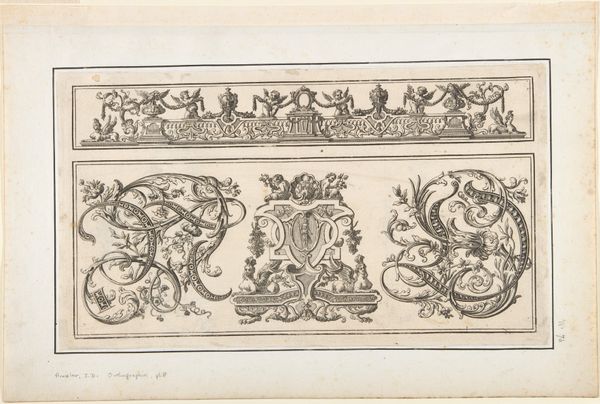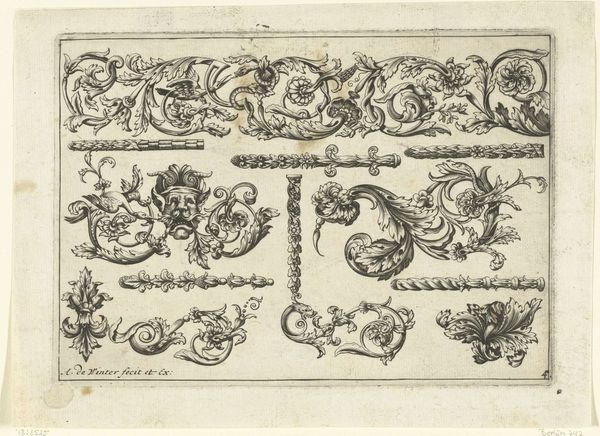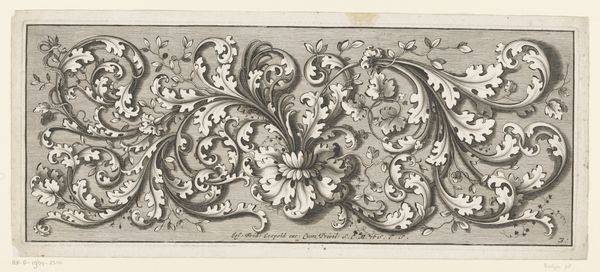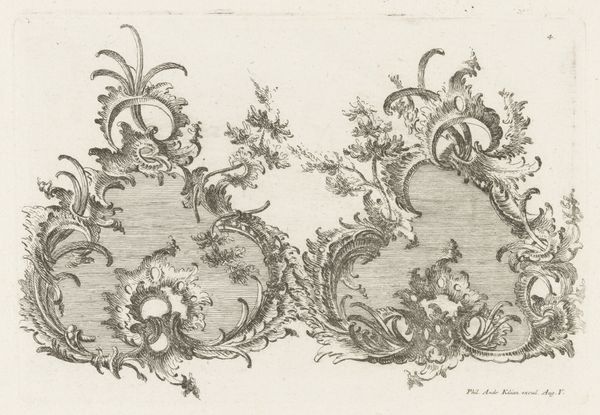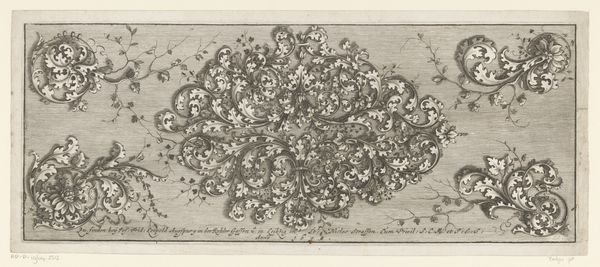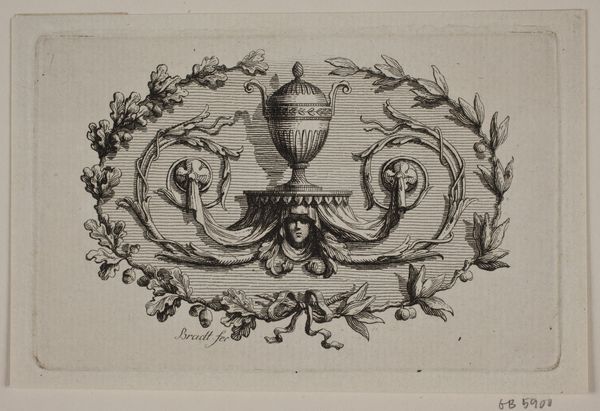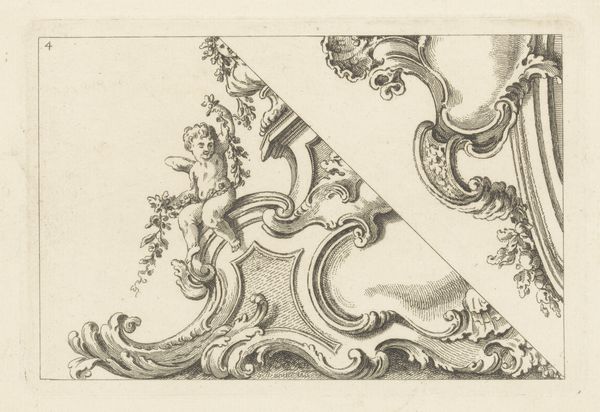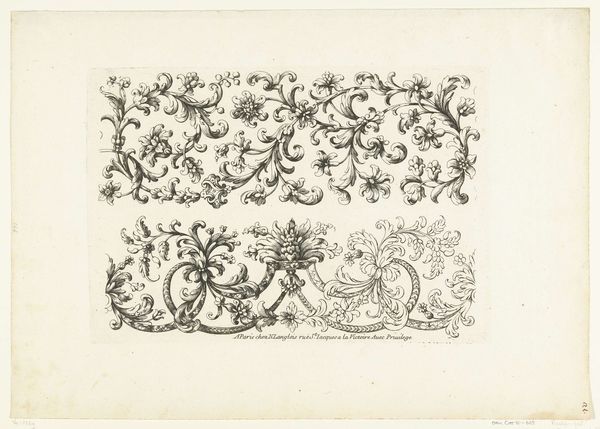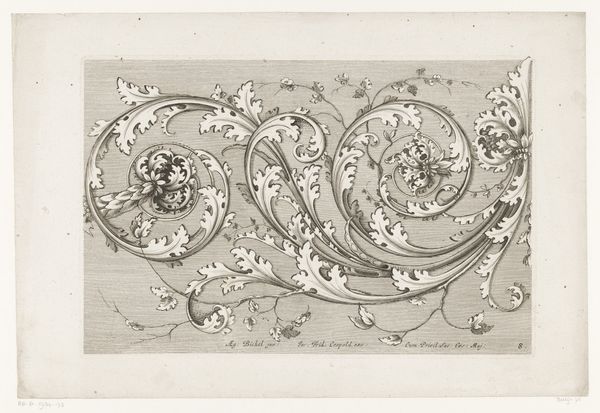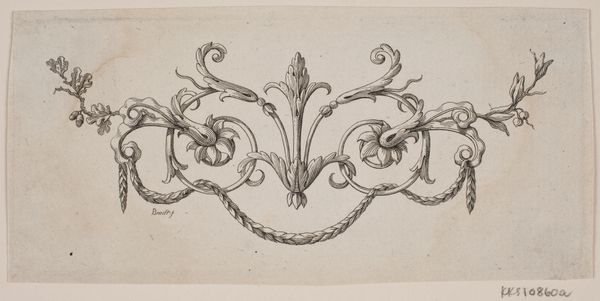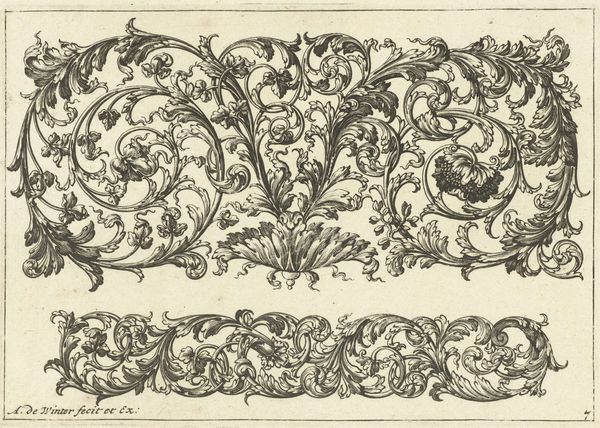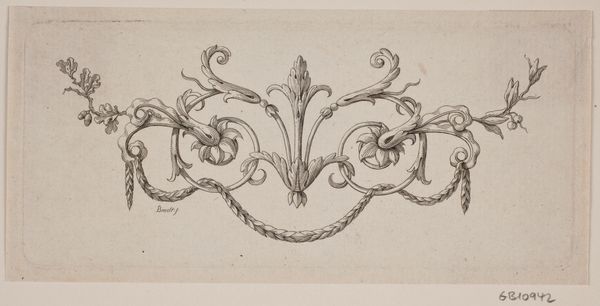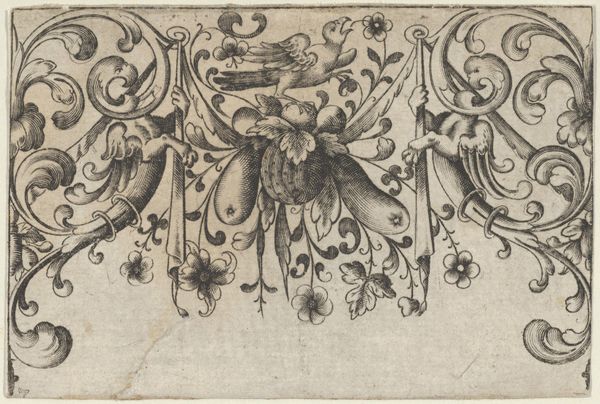
print, engraving
#
baroque
#
pen drawing
# print
#
decorative-art
#
engraving
Dimensions: height 169 mm, width 422 mm
Copyright: Rijks Museum: Open Domain
Curator: This engraving, "Acanthusranken met vaas," or "Acanthus Tendrils with Vase," dates back to 1698. Created by an anonymous artist, it resides here at the Rijksmuseum. Editor: Wow, what strikes me immediately is the overwhelming sense of ornate detail. It feels incredibly lush and decorative. The monochromatic palette creates a formal, almost restrained elegance, despite the intricacy. Curator: That intricacy speaks volumes about the Baroque period's penchant for elaborate design. The acanthus leaves, a recurring motif in classical architecture and art, were often used to symbolize endurance and immortality. The vase, of course, adds a touch of refinement, elevating the natural world. Editor: It makes you wonder, though, about the accessibility of art like this. Was it truly meant for the masses or mainly for the consumption of a privileged elite able to adorn their spaces with these types of intricate designs? How do you see the purpose and societal role of something so clearly geared towards luxury? Curator: It certainly wasn’t created in a vacuum. Prints such as these, despite their ornamental nature, did play a vital role in disseminating artistic styles and influencing design across various social strata. Even if the actual engravings weren't affordable for all, their influence trickled down, shaping tastes and trends. They demonstrate the interplay of art and commerce. Editor: I think understanding who could access and be influenced by such visuals is crucial to grasp its role back then. Luxury reinforces social distinctions, creating visual markers of power and privilege, something worth recognizing even as we appreciate the artwork’s aesthetic skill. Curator: A fair point. Ultimately, pieces like "Acanthus Tendrils with Vase" represent both artistic ingenuity and the cultural values of their time. It offers a window into a world obsessed with ornamentation and status. Editor: I think understanding how ornamentation and even luxury impacts those on the margins and those without allows us to interpret with greater honesty. Curator: Thank you for pointing us to reflect on its full, social significance. Editor: Agreed, the ability to hold this artwork as a testament to this period in history, one with as much value to the elite as indifference to the non-wealthy.
Comments
No comments
Be the first to comment and join the conversation on the ultimate creative platform.
